Our guide to Northumberland National Park, including where to stay, places to visit and best walks
Northumberland is the most northerly of England's 10 national parks. It is also one of the least populated and least visited, yet in spite of its isolation, it boasts some of the country's most beautiful landscapes and wildlife.

History of Northumberland National Park
Northumberland National Park was established in 1956 and protects 410 square miles of upland terrain, including a section of Hadrian's Wall, Upper Coquetdale and the Cheviot Hills. The park lies within the boundaries of Northumberland, covering about a quarter of the county.
In December 2013, Northumberland National Park and Kielder were granted Dark Sky Park status by the International Dark Sky Association, making it the largest protected Dark Sky Park in Europe.
Places to visit
Hadrian's Wall

It took thousands of men eight years to build New York’s Rockerfeller Centre, and nearly 20 years for thousands more to build Shah Jahan’s magnificent love tomb the Taj Mahal. But it took only three legions of Roman soldiers, about 12,000 men, around six years to build Hadrian’s Wall – and they were wearing skirts and sandals.
A huge stone necklace that weighs heavy across the northern neck of the country, it’s a colossal triumph of Roman engineering. This is an awe-inspiring 73-mile chain of thick brick that slices straight across the realm from Newcastle in the east and cuts through Carlisle to the west.
A section of Hadrian's Wall splices through the south of Northumberland National Park and can be accessed from the whimsically named Twice Brewed Inn.
Dark skies
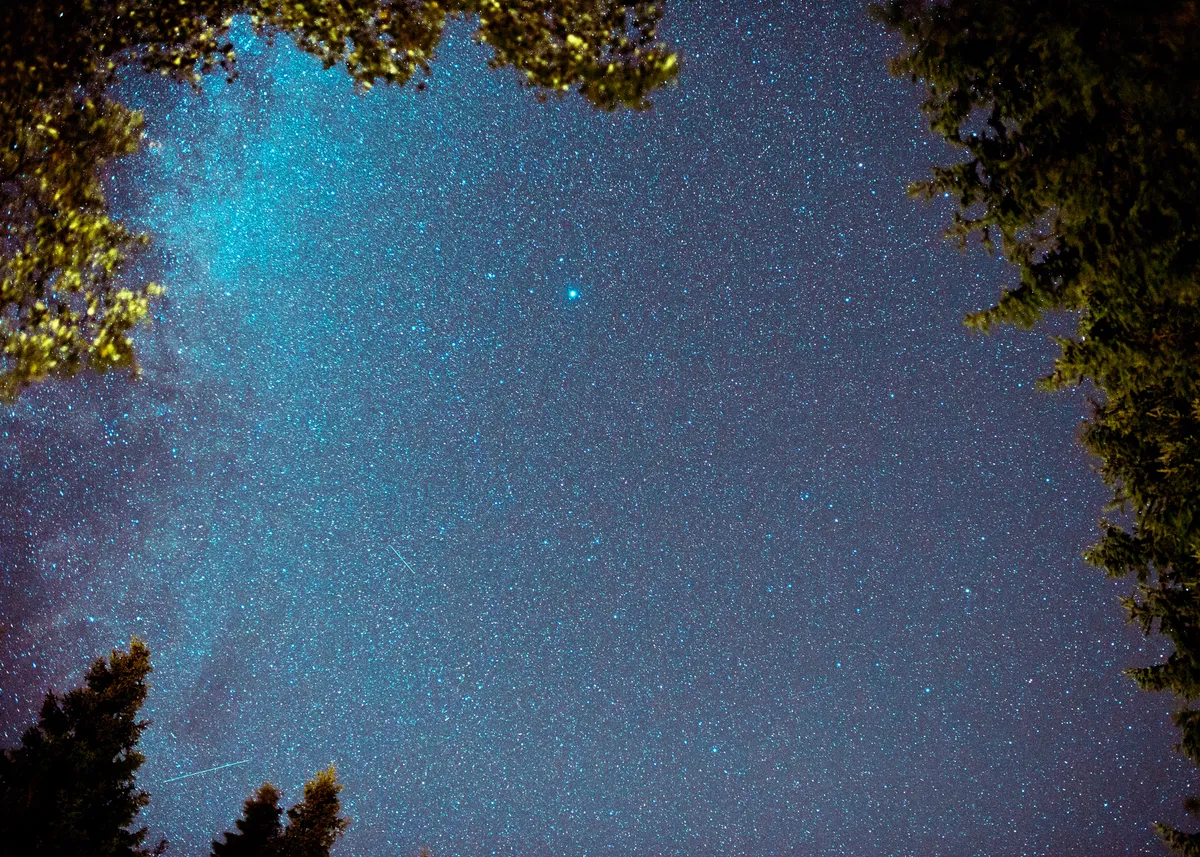
Low levels of light pollution make the national park a great place to go stargazing. There are several Dark Sky Discovery Sites, some of which have star maps to help you discover key planets and constellations.
Sycamore Gap
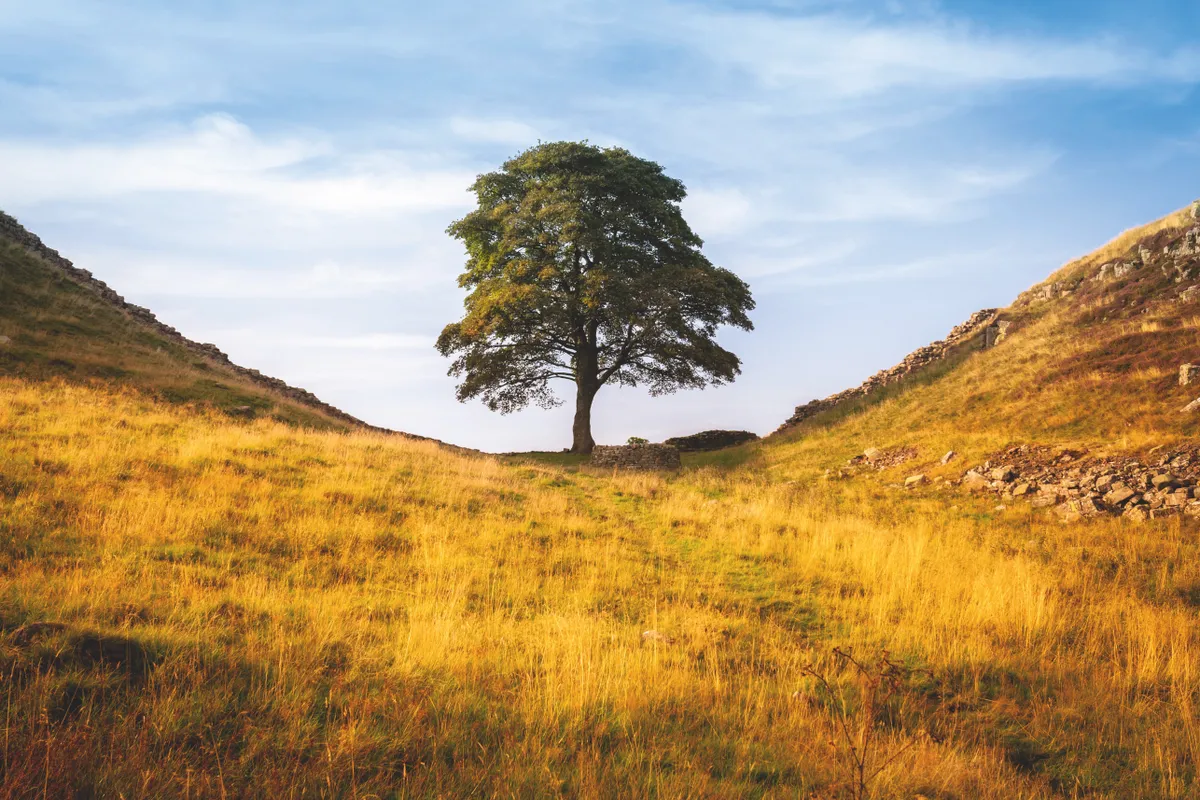
Also known as the ‘Robin Hood’ tree following its appearance in the 1991 film Robin Hood: Prince of Thieves. Sycamore Gap is one of the most photographed trees in the UK. It’s easy to see why as it grows in a dramatic dip alongside Hadrian’s Wall, Northumberland Wall in Northumberland. It was also named England’s ‘Tree of the Year’ in 2016.
Best walks in the national park
Simonside Hills, Northumberland
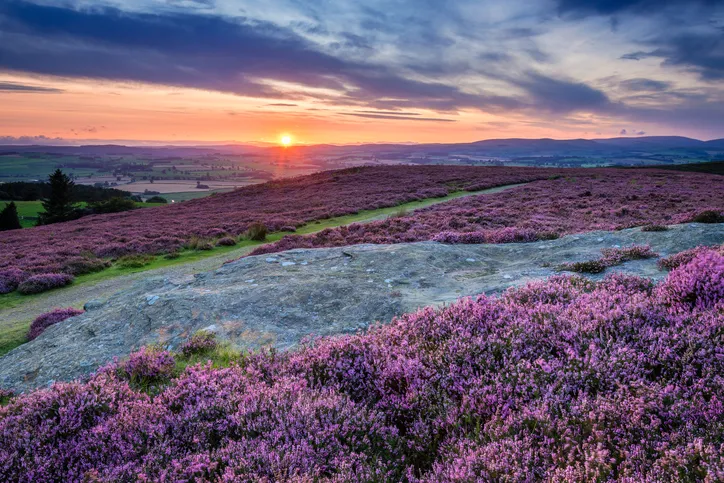
The fell sandstones of the Simonside Hills were deposited from a river delta some 330 million years ago. Weathering and erosion have led to their dominant aspect, which makes them recognisable throughout the county. Walk through conifer forests and across heather moorland to these distinctive summits with a seven-mile hike. Route and map.
Upper Coquetdale, Northumberland
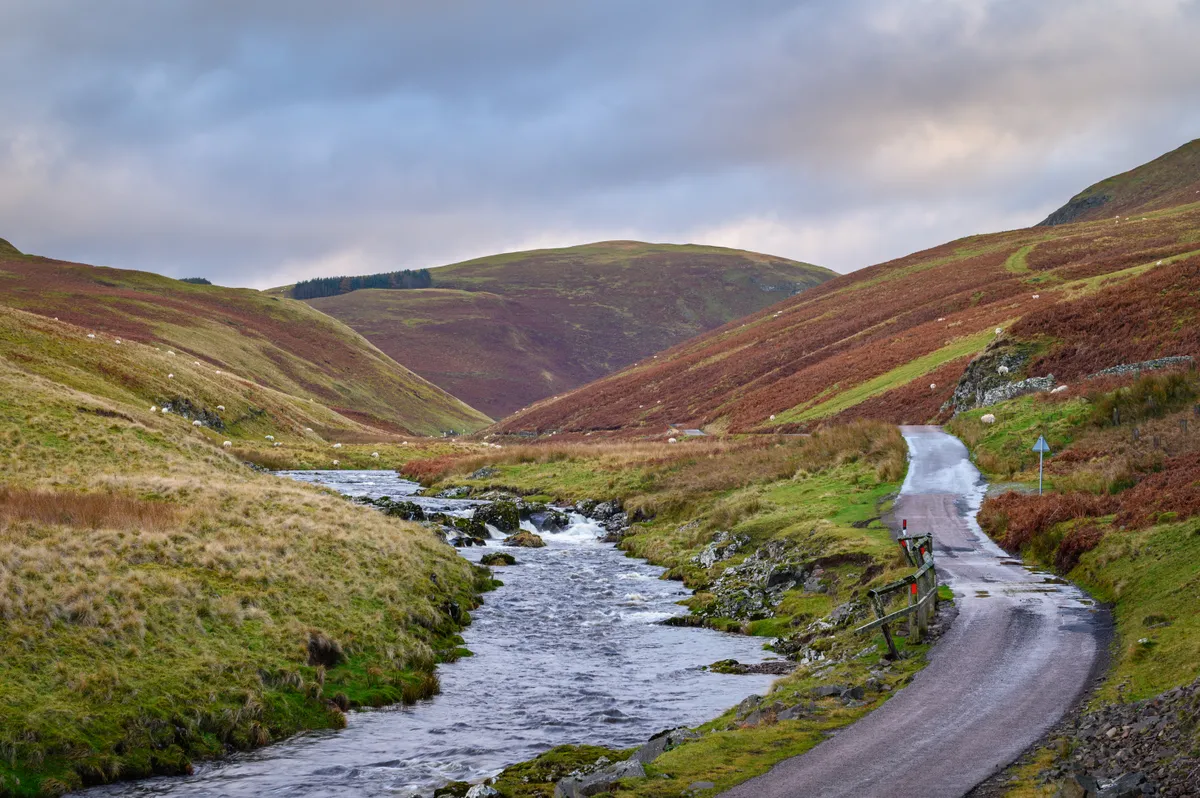
Northumberland’s Upper Coquetdale is physically and historically one of the wildest parts of England. Explore this fascinating landscape on an eight-mile walk over the broad grassy ridgelines, steep-sided valleys and ancient droving routes. Map and route.
Greenlee Lough, Northumberland
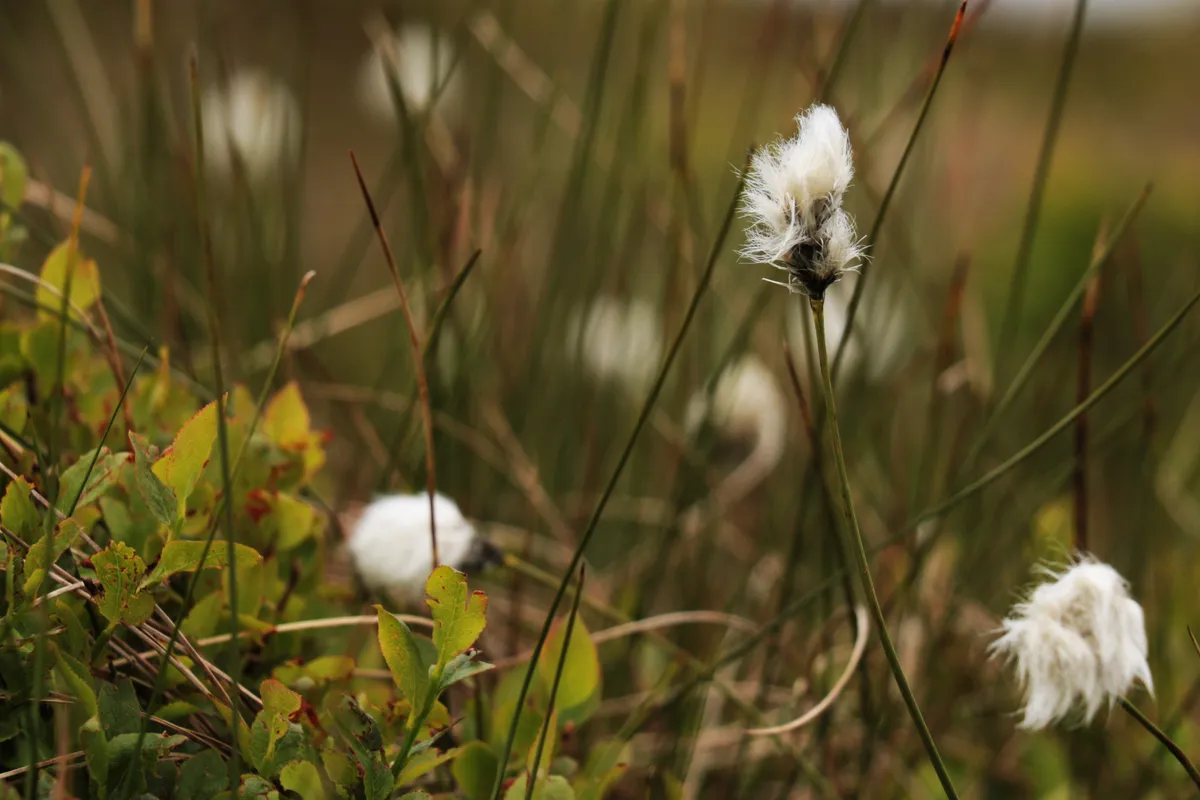
Lying to the north of the Great Whin Sill, and easily visible from Hadrian’s Wall, Greenlee Lough is the largest natural lake in Northumberland. The wetlands surrounding the lough make up a rare mosaic of habitats, home to a rich variety of flora and fauna. Route and map.
Wildlife highlights
Dipper
This bird is typically associated with upland landscapes, such as the Cheviots and Otterburn, but the delightful dipper can also be seen bobbing and scuttling across the tumbling waters of Northumberland's streams and rivers.
Red squirrels
Red squirrels can be found in some of the park's broadleaved and conifer woodlands. Their coats range from light orange to almost black and are shed twice a year, turning thicker and darker in winter. They have four fingers on each paw, plus a vestigial thumb, and five toes. Their double-jointed ankles allow them to go down a tree headfirst. A red squirrel’s bushy tail is used for balance, communication, to slow them down when jumping and as a snuggly blanket. They are smaller and slimmer than grey squirrels.
Grouse
Both red and black grouse can be found in Northumberland National Park. You're most likely to see red grouse, observed all year round in heather moorland across the park. Black grouse were once numerous in Northumberland but are now rare. Their courtship ritual, known as a lek, is one of Britain's great wildlife spectacles.
Roe deer
This native British deer is the only deer species to live in Northumberland National Park. It is rusty brown in the summer months, turning grey, pale brown or sometimes black in winter. The small antlers with three prongs on males are known as tines.
Places to stay
Holly Bush Inn
This old drovers inn dates back more than 300 years. The bar has a welcoming log fire and real ales, and the restaurant serves home-cooked food. There are six ensuite bedrooms (one on the ground floor), secure off-road parking for cycles and motor bikes and drying facilities. Holly Bush Inn welcomes pets.
Firwood Bed & Breakfast
Right on the edge of the national park, Firwood Bed & Breakfast is an ideal based for exploring the surrounding countryside, include the beautiful Cheviot Hills. All of the rooms have views of the gardens and are ensuite with free toiletries and tea and coffee-making facilities.
YHA The Sill at Hadrian's Wall

This 86-bed YHA hostel has 26 bedrooms, a self-catering kitchen, classroom and social areas. All rooms have free Wi-Fi and linen. YHA The Sill at Hadrian's Wall is ideally located just a few hundred metres from the Hadrian's Wall World Heritage site and is close to Sycamore Gap and the Roman fort at Vindolanda.
Hesleyside Huts
Like the idea of camping but the comfort of a roof over your head? Hesleyside Huts offer just that – luxury camping in the heart of the Northumberland National Park. Set within the grounds of historic Hesleyside, these traditional shepherd’s huts provide a quiet and cosy escape, fit with electricity, kitchen, log-burning stove, toiletries and an en-suite bathroom.
Where to eat
The Pheasant Inn
In the heart of Northumberland, not far from Kielder Water, is the The Pheasant Inn. This warm, welcoming country inn offers hearty home-cooked food, local beers, wines and comfortable accommodation.
Twice Brewed Inn
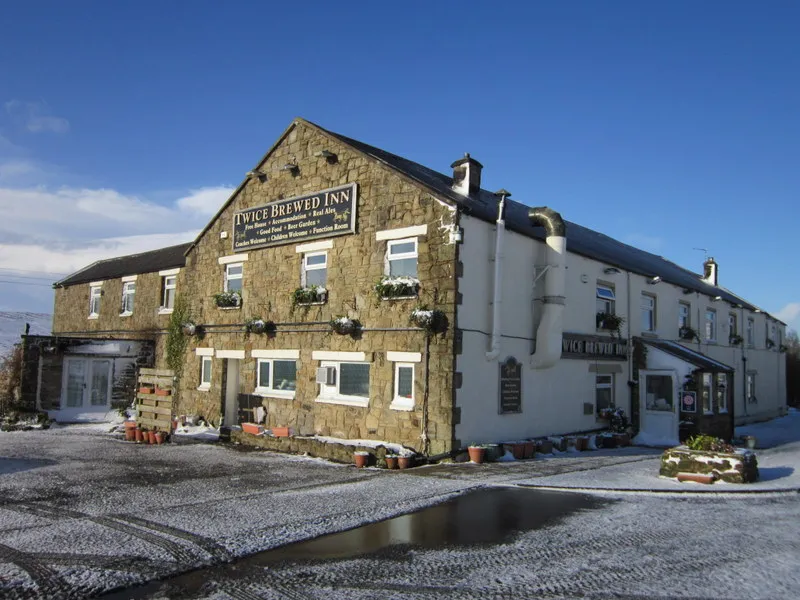
The Twice Brewed Inn is long, thin and welcoming. The menu features spicy burgers hewn from vast Northumbrian sausages, and the ales are drawn from the area’s countless microbreweries. As John Scott, of the Hadrian’s Wall Trust, once told me, “the pubs around here know their audience – they lay on big fires, big meals and big beers”. That sums up the Twice Brewed perfectly.